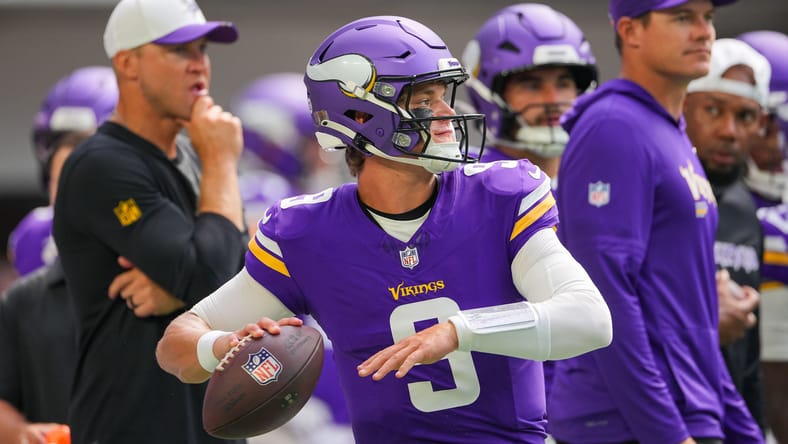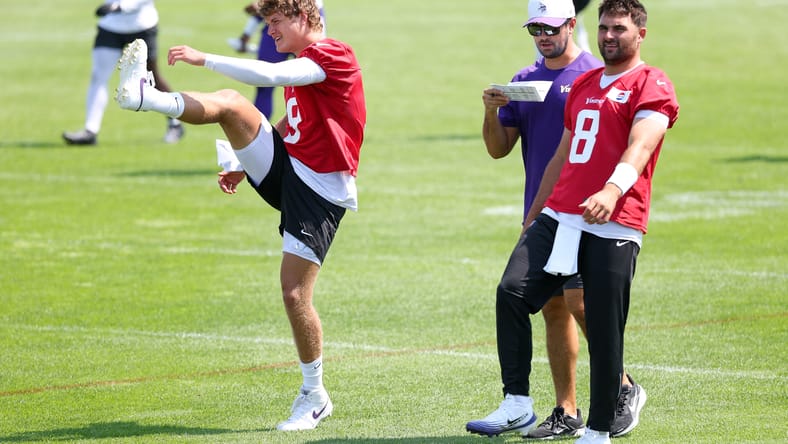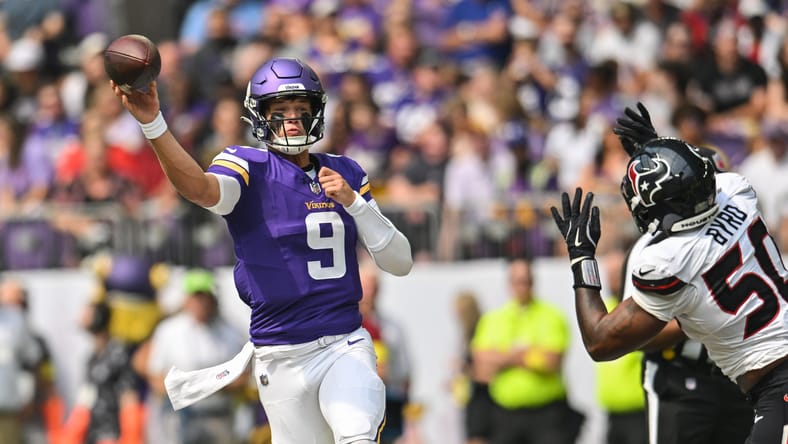The Numbers Bode Well for J.J. McCarthy

Last June (before I started writing for PurplePTSD), I ran an analysis to try to quantify the effects of “situation” on the performance of young QBs.

The premise was simple: given an NFL QB drafted in the first round since 2001 with at least two years of starting NFL experience, take the larger of his first-season passer rating and his second-season passer rating. Compare this with the passer rating of the team’s previous starting QB.
So, for example, Patrick Mahomes had a passer rating of 113.8 in 2018, his first year as a starter, and a passer rating of 105.3 in 2019, his second year. The larger of these, 113.8, is compared with the passer rating of Alex Smith, the Chiefs’ starting QB in 2017, which was 104.7.
On the other side of the 2024 season, we now have three new data points: Jordan Love, CJ Stroud, and Bryce Young all completed their second seasons as starting QBs. Running the data analysis with them included produced the following plot:

Here, the red line is the line of best fit. Note that there is a small but clear positive trend: the better the play of the previous QB, the better the play of their rookie replacement.
Last year, when I did the analysis, the results were suggestive but not quite statistically significant (p-value = 0.13). Now, with the additional data points of Love, Stroud, and Young, the result has crept closer towards statistical significance (p-value = 0.08). This is exactly the behavior you would expect as the sample size gets larger, further confirming the importance of the QB situation on QB performance.

But enough of the gory mathematical details: what does this mean for JJ McCarthy? Last year, Vikings QB Sam Darnold enjoyed the best season of his career, posting a passer rating of 102.5. Plugging that in, the model predicts that over the course of the next two seasons, J.J. McCarthy’s maximum passer rating will be 102.9.
For reference, a passer rating of 102.9 would have placed 6th in the NFL in 2024. The highest all-time career passer rating (held by Aaron Rodgers) is 102.6. If McCarthy posts a passer rating of 102.9 this season, Vikings fans will be dancing in the streets.

Of course, it’s not quite time to call Canton: the correlation coefficient is just r^2 = 0.05, so the play of Sam Darnold is not especially reliable as a predictor of the success of McCarthy. Still, it’s nice to see that the data lend some support to what we’ve all been hoping for: J.J. McCarthy is more likely to succeed than a typical first-year QB because the Vikings’ offense is built for success.
